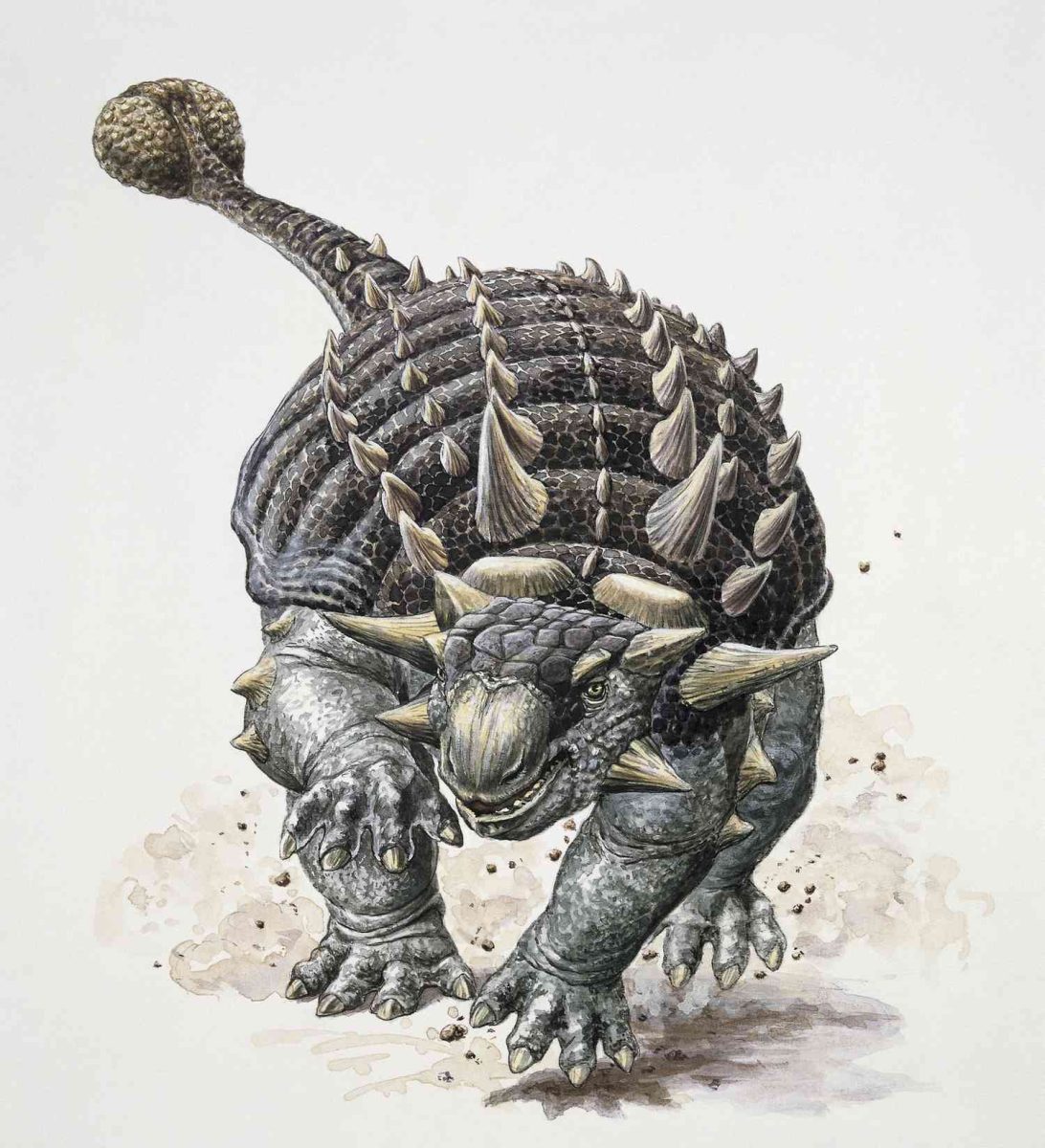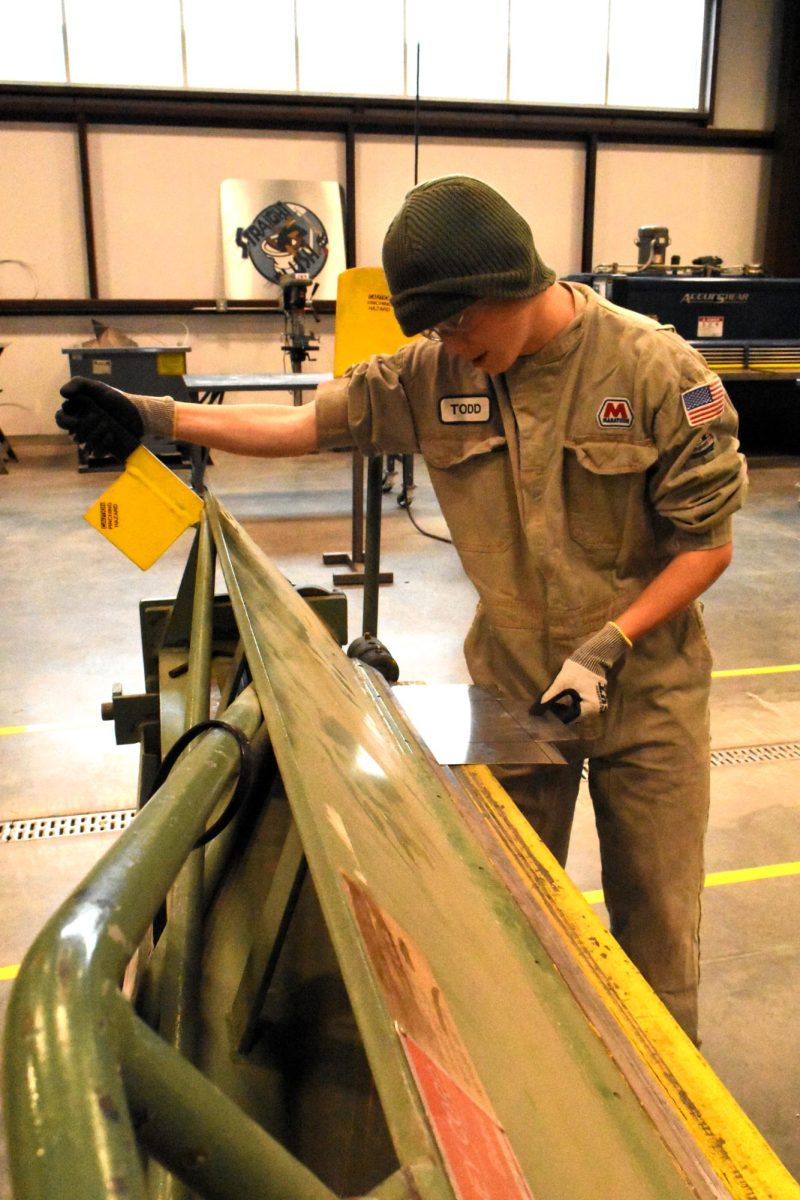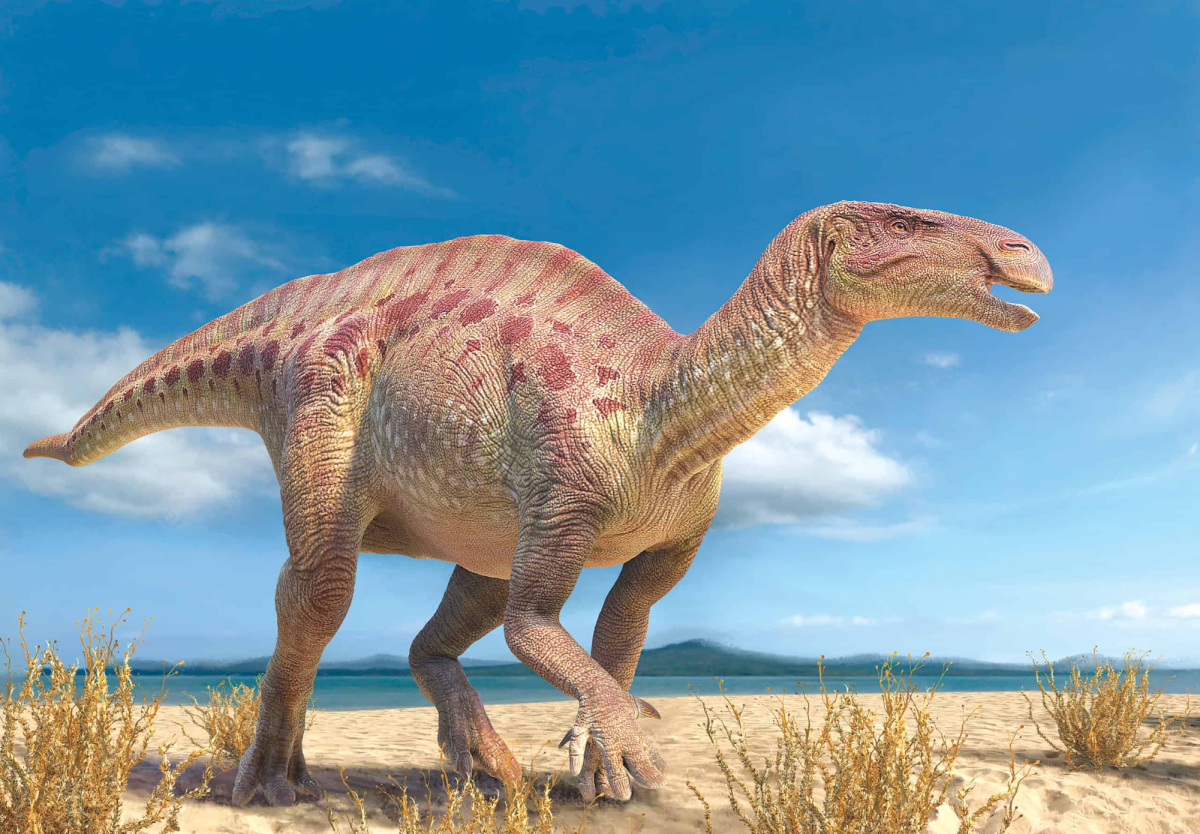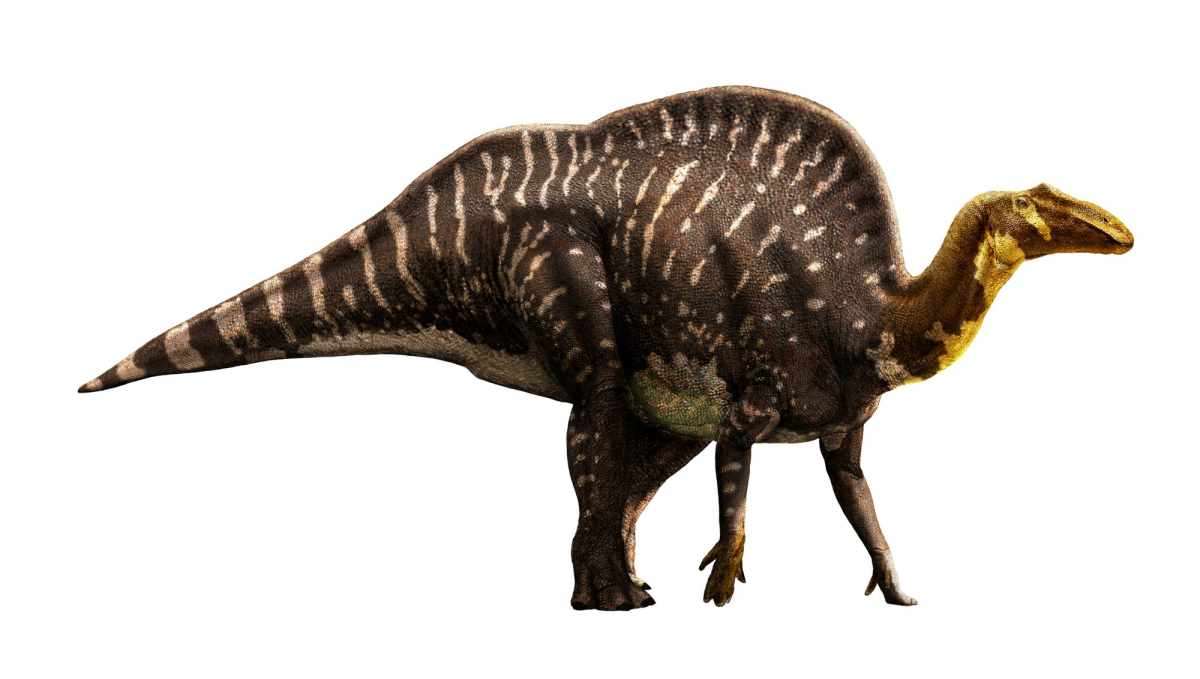Iguanodon Bernissartensis was a large Iguanodontid (low-browsing herbivore) that grazed the Earth 161-99 million years during the late Jurassic and early Cretaceous periods. During its long time on Earth, Iguanodon lived almost all over the world including North America, Asia, Australia, Northern Africa, and Europe. Iguanodon typically had a weight of four to five tons and had a length of nine meters. This makes Iguanodon the largest Iguanodontid, in addition to being the most widespread and well known.
Iguanodon spent most of its time browsing for food, consisting of small shrubs, ferns, and horsetails (grass-like plants) near rivers and lakes. Iguanodon was a facultative biped, meaning it normally walked on four legs, but could walk on two if it wanted. Much like other Iguanodontids, the Iguanodon had a strange five-fingered hand on its front two limbs. The thumb was fused into a spike at the tip, and the three middle fingers had blunt, hoof-like claws. Its teeth were ridged and made to easily chew through plant material. “The structure of the muscles inside its head suggest it had a very long tongue,” according to the Natural History Museum. Most of its skull bones were jointed instead of fused together. This allowed Iguanodon to have a flexible jaw for chewing on its food.
Iguanodon was classified as a dinosaur in 1825. Making it the second creature to be classified as a dinosaur, the first being the Megalosaurus. The first reconstruction of the Iguanodon was done using incomplete remains. It was put in a quadrupedal pose, with the thumb being mistaken for a horn at the end of its nose. In the 1880’s more fossils were found in Bernissart, Belgium. When the creature was reconstructed again, it was put in a kangaroo-like stance with its tail on the ground. This was later corrected after it was discovered to have a quadrupedal pose.






































